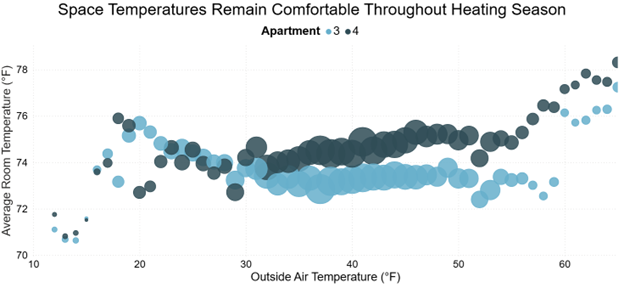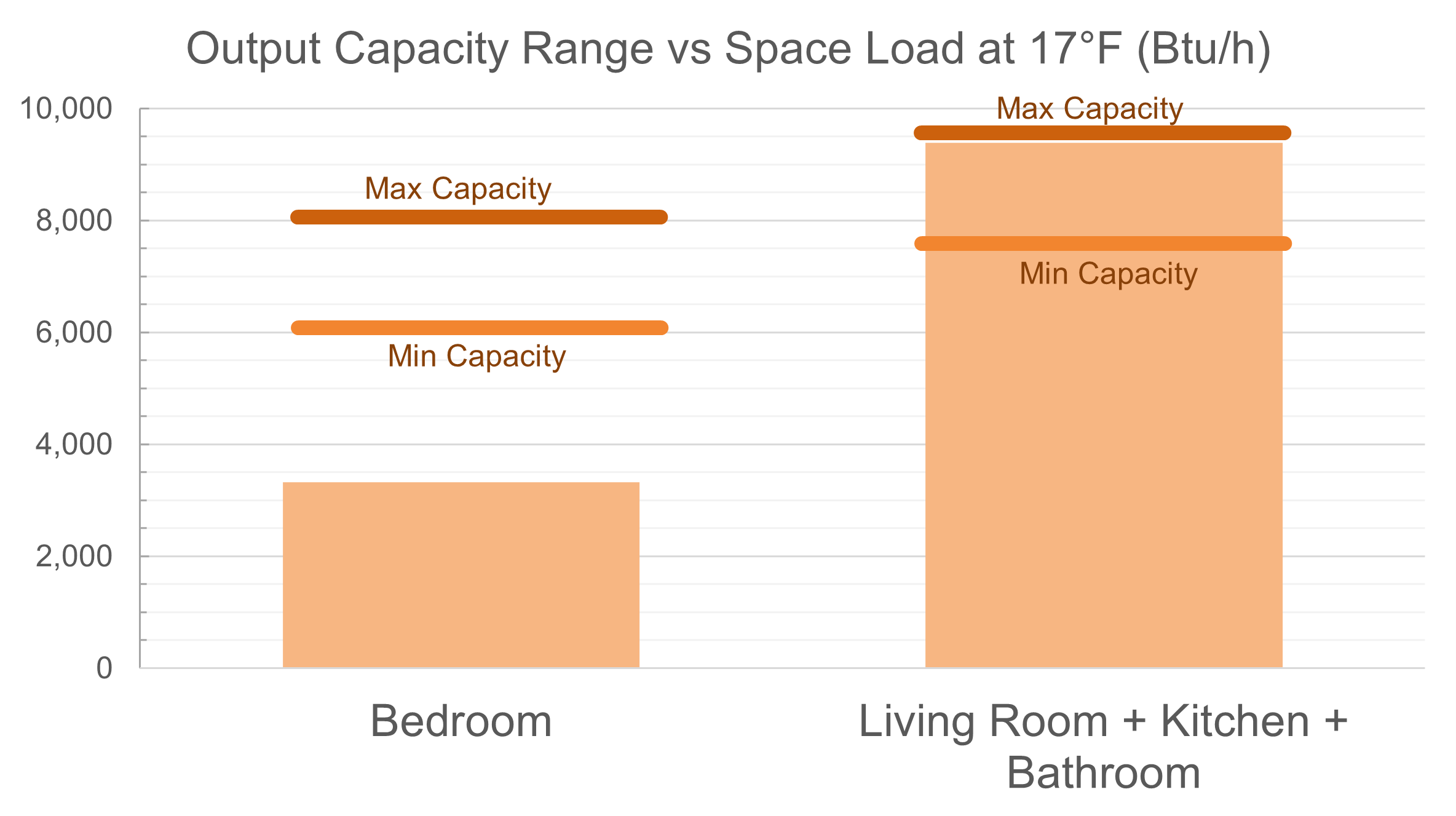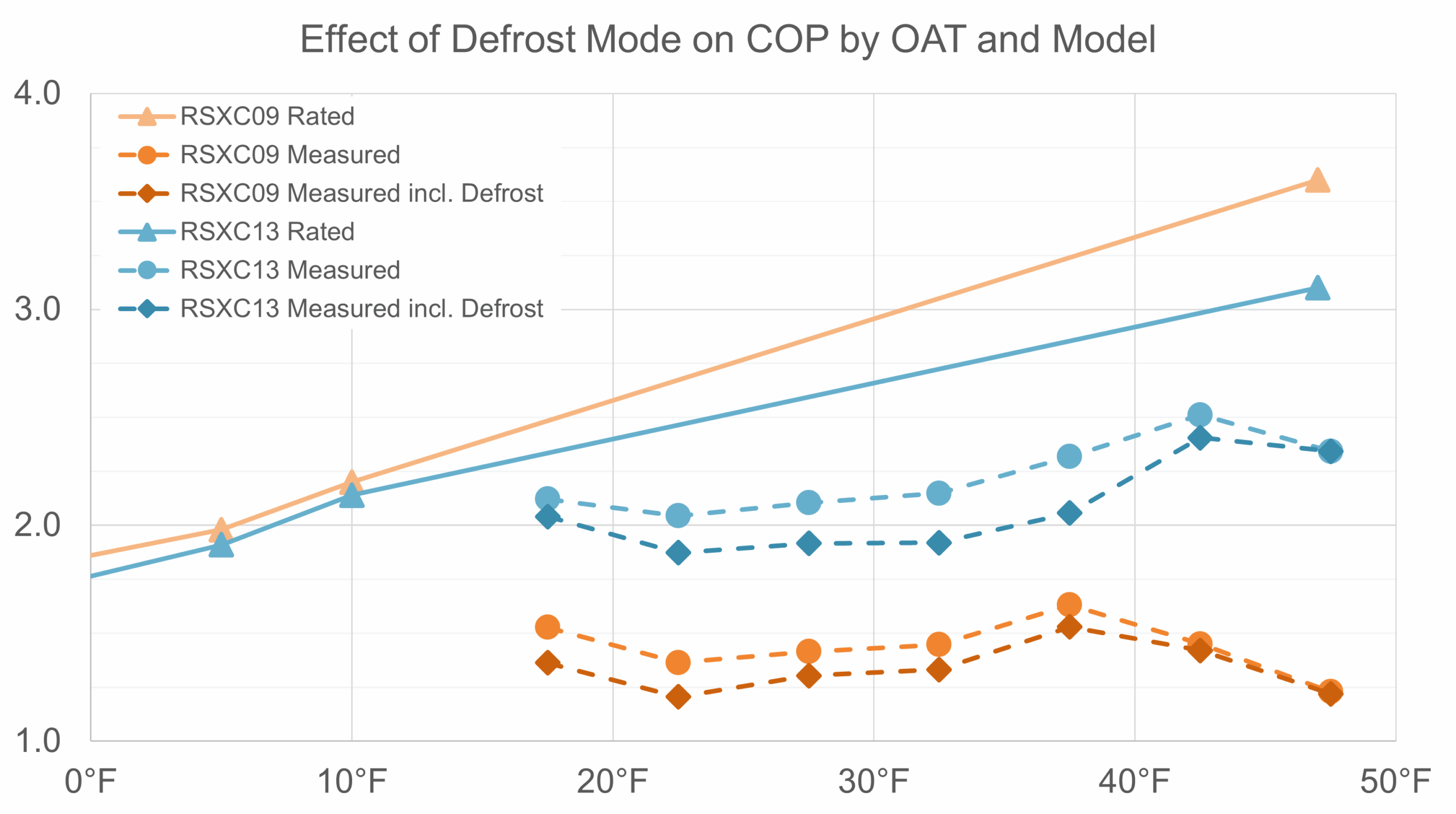

Research & Programs
A recent NYSERDA-supported study conducted by SWA shows that right-sized cold-climate packaged terminal heat pumps (PTHPs) can reliably heat New York City apartments, even with outdoor temperatures as low as 15°F, without backup systems. This study also reinforces that accurate load calculations and right-sized equipment are essential to get the full benefits of electric systems.

In this NYSERDA-supported study, 12 Ice Air RSXC-series cold-climate packaged terminal heat pumps were installed in four newly built multifamily apartments in Brooklyn, NY. Each apartment had a smaller RSXC09 in each of the two bedrooms and one larger RSXC13 in the living room. SWA monitored the electric consumption and heating output over two winters to investigate heating performance.
During outdoor temperatures as low as 15°F, average room temperatures remained steady in the mid-70s°F without the need for any backup electric resistance heating, with some units observed supplying air exceeding 100°F.
Additionally, building staff were interviewed at the conclusion of the monitoring period and there were no resident-reported comfort issues in the monitored apartments.
Our analysis confirms that cold-climate PTHPs are capable of reliably meeting the winter heating demands of NYC without relying on backup systems.
The figure below shows the average outside air temperature in two apartments during winter months. The size of the points shows the frequency of the data.

Primarily due to their relatively small size, the bedroom heating loads were lower than even the minimum output of the RSXC09, causing frequent cycling on and off. While there were differences in occupancy and resident behavior, SWA has documented similar degradation in performance due to oversizing in VRF systems. Other research we’ve conducted also indicates that oversized equipment is significantly less efficient than right-sized systems.
SWA compared the design heating loads for the bedroom and living room spaces against the minimum and maximum output capacity of the PTHPs serving their respective spaces. The living room spaces are served by units which are well aligned with the space heating load. The bedroom heating load is significantly below even the minimum output capacity of the installed PTHP. The figure below shows the range of the unit capacity compared to the calculated load.

Manufacturers serving the NYC market should consider offering smaller capacity units or units with larger turndown ratios to serve spaces with smaller loads, such as bedrooms or high-performance buildings (e.g. Passive House).
Efficiency was evaluated by determining the coefficient of performance (COP). COP is the ratio of energy delivered to the apartments by the PTHPs and the energy consumed during this process.

The winter seasonal COP values ranged from 1.2 to 2.3 for individual units. To resolve the issue of ice build-up on the coils, heat pumps operate in a defrost mode. When including the energy consumed during defrost mode operation seasonal COPs decreased by 0.0 to 0.3. Defrost mode operation accounted for about 6% of total operating hours. During the coldest temperatures observed (15–20°F) the RSXC09 COP was 1.4 on average and the RSXC13 COP averaged about 2.0.
The average efficiency for each model, including defrost periods, are plotted against the outdoor air temperature (OAT) and compared to the steady-state, laboratory ratings in Figure 2.

While defrost cycles reduce the efficiency of the PTHPs, they are a necessary aspect of heat pump technology in cold climates; however, the larger driver of efficiency in this installation was oversizing. We believe efficiency can be improved by right-sizing the units.
Although defrost lowered the seasonal COP slightly (~0.1 points), the biggest impact on efficiency came from oversizing.
Note that the rated efficiencies are calculated under controlled laboratory conditions once the equipment being tested has reached a steady state, while the measured efficiencies are observations from equipment used by residents in the real world over an extended time period (~15 months). The rated values are not necessarily intended to be a reflection for real world, average seasonal performance, thus they are presented in the graph as a point of reference rather than a direct comparison to the measured data.